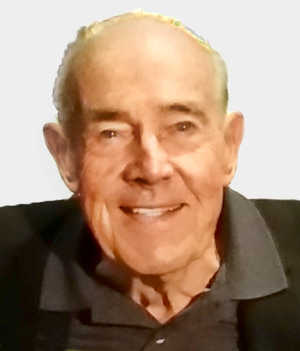- Lake County News reports
- Posted On
Lake County Fair opens Thursday with parade, festivities

LAKEPORT, Calif. – The Lake County Fair will open on Thursday evening with a parade and offer four days filled with entertainment, competitions and livestock shows.
The fair kicks off with a parade the begins at 5:30 p.m. and moves along Main Street south from Eighth Street and up to the fairgrounds' main gate on Martin Street, led by Grand Marshals Grant and Ross Hardester.
The ribbon cutting ceremony will take place at 6 p.m. at which time the gates will open and the “Party with the Animals” – this year's fair theme – begins.
City officials estimate about 2,000 people will be in attendance for the parade and opening night events.
The Lake County Fair is one of the county's summertime events, and is enjoyed by an estimated 35,000 people each year.
The annual event offers music, contests, livestock shows, exhibits and competitions, vendors, food,
and the Midway of Fun.
Admission rates are $10 for adults, $6 for seniors (age 60 and up), $6 for children (ages 6 through 11), and children age 5 and under have free admission.
Thursday is Kids Day, when children age 11 and under are admitted for $3.
For more information visit www.lakecountyfair.com or follow the fair on Facebook.
The Lake County Fairgrounds are located at 401 Martin St., Lakeport.
The full schedule follows.
THURSDAY, SEPT. 1
Special attractions
– Kid's Day, Children 11 and under – $3 admission.
– Draft horse wagon rides.
– Pig racing, 6:30 p.m. and 8:30 p.m.
– Family Fun Area in Fiesta Park; a great place for Mom and Dad to relax with youngsters.
– Mickey the Clown, strolling balloon sculptor Fill-up and magician Ken Garr can be found performing throughout the grounds, plus much, much more.
Schedule
8 a.m.: Junior Rabbit and Cavy Show, Junior Swine Show, Baldwin Pavilion
1 p.m.: Junior Sheep Show, Baldwin Pavilion
3 p.m.: Junior Meat Goat Show, Baldwin Pavilion
5:30 p.m.: Parade begins on Main Street
6 p.m.: Opening ceremonies, main gate; Blue Ribbon Dinner, Academy Park; fair gates open
6 to 9 p.m.: Maker demonstration – Jewelry making by Amy Patton in Lewis Hall
6:30 p.m.: Michael Barrish, singer-songwriter, country soul, Mediacom Gazebo Stage
7 p.m.: Johnny Tsunami, high octane American roots rock, Lake County News Main Stage; maker demonstration, Lake County Arts Council’s Diane Liebe and Richard Schmidt, watercolor sip and paint, Fritch Hall
7:30 p.m.: Fiesta of the Horse, fun-filled horse entertainment event, sponsored by St. Helena Hospital Clear Lake
8 p.m.: Clear Lake Clikkers – Mediacom Gazebo Stage
8:30 p.m.: Johnny Tsunami, high octane American roots rock, Lake County News Main Stage
10 p.m.: Buildings close
11 p.m.: Fair closes

FRIDAY, SEPT. 2
Special attractions
– Carnival pay-one-price day, $30; purchase in the carnival.
– Walk-on contest, favorite summer flower arrangement at Flower Hall. Walk in your entry between 4 and 5 p.m. and join the competition.
– Children’s Story Time.
– Draft horse wagon rides.
– Pig racing, 6:30 p.m. and 8:30 p.m.
– Mickey the Clown, strolling balloon sculptor Fill-up and magician Ken Garr can be found performing throughout the grounds, plus much, much more.
Schedule
8 a.m.: Junior Poultry and Turkey Show, Baldwin Pavilion
9 a.m.: Open Dairy Goat Show, Alexander Barn Arena; Junior Beef and Dairy Cattle Show, Baldwin Pavilion
9 to 11 a.m.: School tours
12 p.m.: Junior Dairy Goat Show, Baldwin Pavilion
4 p.m.: Gates open; maker demonstration, Lake County Arts Council’s Richard Seisser, pastels, Fritch Hall
4:30 p.m.: David Neft, Mediacom Gazebo Stage
5 p.m.: Fargo Brothers, Americana, Rock 'n' Roll, blues, Lake County News Main Stage; maker demonstration, custom leather by Don McCown, Lewis Hall
5:30 p.m.: Favorite summer flower arrangement contest, Flower Hall; Junior Dog Care and Training, Alexander Barn Arena
6:30 p.m.: David Neft, Mediacom Gazebo Stage
7 p.m.: MendoLake Mudd Bogg Nationals presented by Robinson Rancheria Resort and Casino, Main Grandstands; maker demonstration, Kerri Hershey, free motion machine quilting demonstration in Clothing and Textile Building
7:45 p.m.: Fargo Brothers, Americana, Rock 'n' Roll, blues, Lake County News Main Stage
9 p.m.: Fargo Brothers, Americana, Rock 'n' Roll, blues – Lake County News Main Stage
10 p.m.: Buildings close
11 p.m.: Fair closes
SATURDAY, SEPT. 3
Special attractions
– Junior Livestock Auction and Round Robin Competition, Baldwin Pavilion.
– Carnival pay-one-price day, $30; purchase in the carnival.
– Walk-on contest, favorite summer flower arrangement at Flower Hall. Walk in your entry between 4 and 5 p.m. and join the competition.
– Children’s Story Time with Cookie Mouse appearance.
– Draft horse wagon rides, climbing wall, award winning chainsaw carving, plus much more.
– Pig racing: 12:30 p.m., 2:30 p.m., 4:30 p.m., 6:30 p.m. and 8:30 p.m.
– Mickey the Clown, strolling balloon sculptor Fill-up and magician Ken Garr can be found performing throughout the grounds, plus much, much more.
– Music on two stages plus evening grandstand events are all free.
Schedule
10:30 a.m.: Gates open; Junior Livestock buyers registration and luncheon, Baldwin Pavilion
11 a.m. to 1 p.m.: Lake County Library storyteller Barbara Green reading “Cookie Mouse,” Family Fun Area; maker demonstration, Lake County Arts Council’s Marilyn Crayton and Randy Kocker, gourd decorating, Fritch Hall
11:30 a.m.: Majide!, duo of standard jazz classics from the Great American Songbook, Mediacom Gazebo Stage
Noon: Groovy Judy, upbeat, danceable rock, pop and funk, Lake County News Main Stage
1 p.m.: Junior Livestock Auction, Baldwin Pavilion; walk-on contest, Farm Animal Bingo, Lewis Hall; maker demonstration, Lake County Arts Council’s David Stillwell, abalone jewelry, Fritch Hall; kids fun time, candle play with Stephanie Figueroa, Family Fun Area
1:30 p.m.: Majide!, duo of standard jazz classics from the Great American Songbook, Mediacom Gazebo Stage
2 to 4 p.m.: Maker demonstration, Sheila O’Hara, weaving demonstration, Clothing and Textile Building
2 p.m.: Groovy Judy, upbeat, danceable rock, pop and funk, Lake County News Main Stage
2:30 p.m.: Walk on contest, favorite chocolate layer cake contest takes place at Lewis Hall; walk in your entry between 11 a.m. and 2 p.m. and join the competition.
3 p.m.: Majide!, duo of standard jazz classics from the Great American Songbook, Mediacom Gazebo Stage
3 to 5 p.m.: Maker demonstration, Desiree Todd, cheese making, Lewis Hall; maker demonstration – Lake County Arts Council’s Sandy Stillwell, memory wire jewelry, Fritch Hall
4 p.m.: Walk on contest, knucklebones contest takes place at Flower Hall; Groovy Judy, upbeat, danceable rock, pop and funk, Lake County News Main Stage
5 p.m.: Austin & Owens, neo-Flamenco and jazz duo – Mediacom Gazebo Stage
5 to 7 p.m.: Maker demonstration, custom leather by Don McCown, Lewis Hall
5:30 p.m.: Maker demonstration, Kerri Hershey, free motion machine quilting demonstration in Clothing and Textile Building
6 p.m.: Round Robin, Baldwin Pavilion; maker demonstration, Two Chick’s Tasty Treats Food Fun, chocolate work, Lewis Hall
6 to 7:30 p.m.: Two Chick’s Tasty Treats, Lewis Hall
6 to 8 p.m.: Goat milking, by hand and machine, Mather Barn
6:30 p.m.: Amateur Talent Contest – Lake County News Main Stage
7 p.m.: Motorcycle TT and Flat Track Racing presented by Twin Pine Casino & Hotel, Main Grandstands; Austin & Owens, neo-Flamenco and jazz duo – Mediacom Gazebo Stage
8 p.m.: Hip Replacements, blues, rock, R&B, Lake County News Main Stage
8:30 p.m.: Austin & Owens, neo-Flamenco and jazz duo – Mediacom Gazebo Stage
9:30 p.m.: Hip Replacements, blues, rock, R&B, Lake County News Main Stage
10 p.m.: Buildings close
11 p.m.: Fair closes
SUNDAY, SEPT. 4
Schedule
11 a.m.: Fair opens
1 p.m.: Finger print animal art, Fritch Hall
2:30 p.m.: Favorite fruit crisp contest, Lewis Hall
6 p.m.: Stock car, dirt and boat races, Grandstands
10 p.m.: Buildings close
11 p.m.: Fair closes

 How to resolve AdBlock issue?
How to resolve AdBlock issue? 









